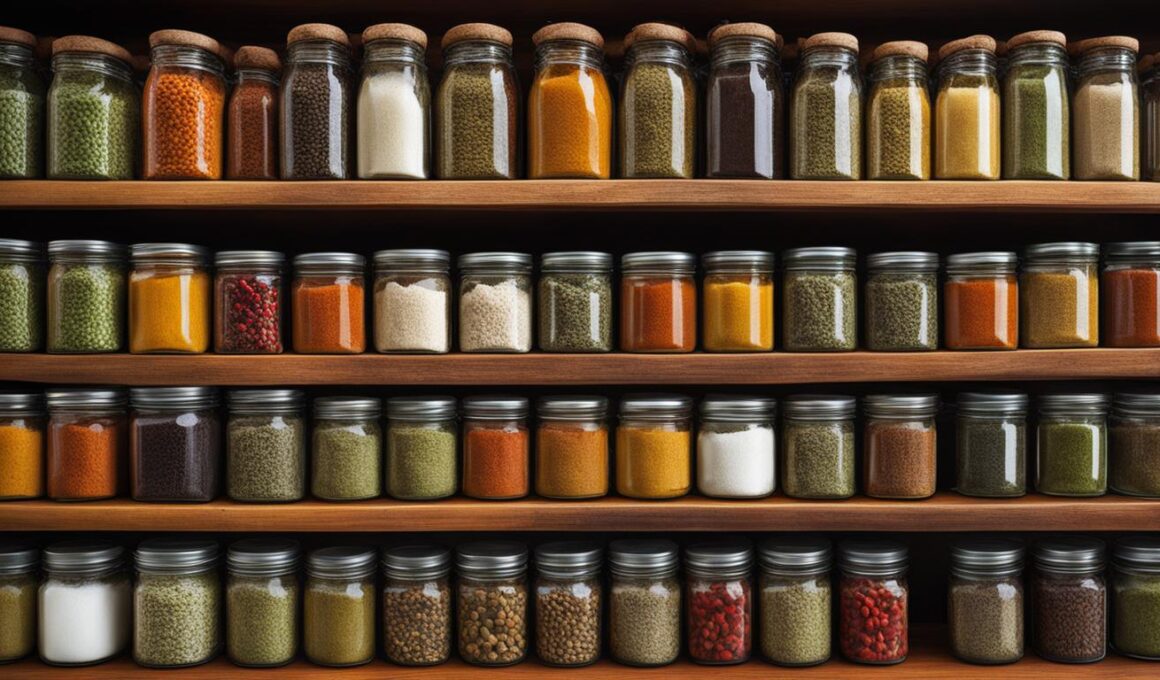If you’re a fan of the lightly sweet licorice flavor of star anise, you’ll love experimenting with its substitutes. Whether you want to explore new flavors or don’t have star anise on hand, there are plenty of alternative spices that can add an enchanting twist to your cooking. In this article, we’ll dive into the world of star anise substitutes and help you discover the perfect substitute for star anise in your dishes.
Star anise is a popular spice in Chinese cuisine, commonly used in dishes like pork and chicken. If you don’t have access to star anise, fret not! You can still recreate its flavors with other spices. Anise seed, despite not being related to star anise, shares a similar licorice-like taste and can be a great substitute. Ground star anise can also be used as a replacement if you don’t have whole star anise on hand, although you’ll need to consider the texture difference between the two.
But that’s not all! There are several other alternatives that can bring a similar sweet and aromatic touch to your dishes. Cloves, cinnamon, fennel seeds, and Sichuan peppercorns can all provide a delightful twist to your culinary creations. So, let’s dive in and explore the world of star anise substitutes, and discover how they can add a touch of magic to your cooking.
Understanding the Unique Flavor of Star Anise
Star anise, renowned for its distinctive licorice-like taste, exhibits a delicate flavor profile that adds an enchanting twist to various culinary creations. It is widely utilized in Chinese and Vietnamese cuisine, where its delectable flavor infuses soups, stews, and braised dishes, transforming them into culinary masterpieces.
This aromatic spice also plays a vital role in the revered Chinese five-spice blend, renowned for its harmonious blend of flavors. Alongside star anise, this blend incorporates an enticing combination of cinnamon, cloves, fennel seeds, and Sichuan peppercorns. The Chinese five-spice blend is a staple in Chinese cooking, enhancing the taste of stir-fries, roasted meats, and numerous other dishes.
Star anise’s culinary prowess extends beyond savory dishes, making it a versatile ingredient that can impart a unique twist to desserts such as cookies, cakes, and puddings. Its tantalizing flavor profile ensures that every bite is a delightful adventure for the taste buds.
With its rich, licorice-like taste, star anise is an indispensable ingredient that elevates the flavors of various dishes, particularly in Chinese and Vietnamese cuisines. Whether used individually or as a part of the Chinese five-spice blend, this spice adds an unparalleled depth and complexity to your culinary creations.
Can I Use Dragon Fruit as a Substitute for Star Anise in Cooking?
While dragon fruit and star anise share a similar name, they have very different flavors. Unfortunately, you cannot use dragon fruit as a substitute for star anise in your cooking. If you’re interested in dragon fruit, you may want to learn how to care for dragon fruit plants to grow your own supply.
Anise Seed Substitutes
If you’re looking to replace anise seeds in your recipes, there are several alternatives that can provide a similar flavor profile. Fennel seeds are a popular substitute, offering a licorice-like taste and aromatic fragrance that can enhance your dishes. Star anise, known for its distinctive flavor, can also be used as a substitute for anise seeds, infusing your recipes with its unique profile.
For those who want to experiment with different flavors, caraway seeds and dill seeds can add their own twists to recipes. Caraway seeds bring an earthy and nutty flavor, while dill seeds offer a tangy and aromatic taste. If you’re looking for a more concentrated substitute, consider using licorice root, anise extract, or anise oil, each with their own distinct flavors.
Other alternatives worth exploring include fennel pollen, tarragon, cardamom seeds, and basil seeds, which can introduce new dimensions to your dishes. When substituting anise seeds, it’s important to consider the conversion ratios. As a general guideline, using half the amount of fennel seeds can be a starting point, but adjustments may be necessary based on personal preference and the strength of the substitute.









